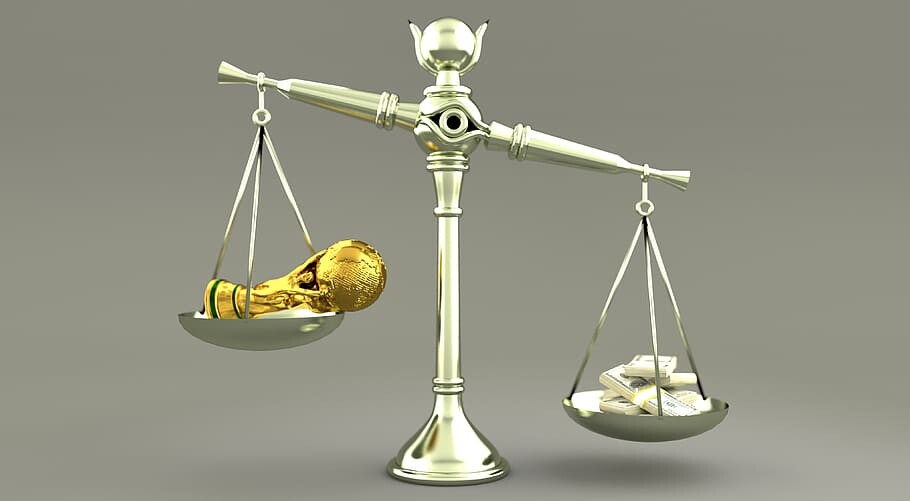
Bullion TP@BullionTP Jul 6 2021
Wall Street Silver
The Gold to Silver Ratio
It is oftentimes mentioned by precious metals analysts, advocates and others who analyze the precious metals price movements but what exactly is the gold to silver ratio and what is its historic importance? The gold to silver ratio is the amount of silver one can theoretically buy with a fixed amount of gold. The gold to silver ratio is measured in the number of troy ounces of silver one can acquire with one troy ounce of gold, at least in the West, but it can be measured in any unit that is the same across the two precious metals.
The gold to silver ratio is a helpful ratio for precious metals traders and other paper investors (and arguably some physical investors) to assess when the value of gold or silver are off dramatically from each other and therefore one is likely overvalued or undervalued relative to the other. We must remember though that the paper spot price of both precious metals are heavily manipulated so in many ways the ratio today is of questionable value until the true price of both of the precious metals is allowed to be discovered in a truly free and fair market. That will require the destruction of the paper markets, something all of us stackers are working fervently to accomplish.
In antiquity, gold and silver were both the only real money and Ancient Romans, Chinese, Greeks, Egyptians, Babylonians, Assyrians, Harappans, and Sumerians paid very close attention to the ratio as it was effectively part of the transaction. Nations typically facilitated trade by weighing their gold or silver and having predetermined gold to silver ratios. One such example is that of the shekel, which was an ancient coin that held about 11 grams of silver (0.39 ounce) and had a gold to silver ratio of 15 to 1, meaning 15 silver shekels was exchangeable for 1 shekel of gold.
The gold to silver ratio was altered throughout history by governments with some key examples being 2½ to 1 in Egypt under Menes (Code of Menes c. 3,100 B.C.), 10 to 1 under Alexander the Great (c. 330 B.C.), 12 to 12½ to 1 in the Roman Republic (until 27 B.C.), 10 to 1 during most of Europe’s rise until 1492 when it rose to 15 to 1 due to the influx of large amounts of silver taken from the New World as extracted and shipped in Galleons to Spain. England, upon her ascension to global power, set the ratio at 16 to 1 and Napoleon later set the ratio at 15½ to 1. When Adam Smith wrote the Wealth of Nations in 1776 he said “An ounce of gold will commonly purchase from fourteen to fifteen ounces of silver…” In 1792, the ration was set to 15 to 1 in the United States.
Wall Street Silver: The Gold to Silver Ratio (Part 2)
The story thereafter became one that dovetailed with the rise and fall of the 1st and 2nd Bank of the United States (central banks), the mining out West and the improvements in mining brought about by the Industrial Revolution, and the bimetallism fights of the 19th century. The ratio stayed within a range of around 15 to 1 to the low 20s to 1 until around the turn of the century when it started spiking to 30 to 1 and 40 to 1, with some brief intervals where the ratio declined closer to historical levels. By 1933 when a four day bank holiday was declared to stop the “hoarding” of gold and silver, the ratio spiked to over 130 to 1 and never went below 50 to 1 until the late 40s after the Bretton Woods agreement.
The gold to silver ratio stayed under 40 to 1 until the 1980s when it maintained a high ratio range of 50 to 1 to 90 to 1. Coming out of the 2008 financial crisis, the ratio never fell below 40 to 1 but spiked to over 90 to 1 and remains high to this day, where it stands at 67.6 to 1 as of July 5th, 2021. There is clearly a correlation between the massive suppression of the silver price in recent decades and the ratio climbing to such high numbers compared to the historically and commonly cited ratio of 16 to 1 average.
Many believe, and Bullion TP is one of them, that a return to the historical gold to silver ratio will occur when the paper markets are broken and the manipulation of gold and silver is ended via this paper price-fixing mechanism regime we currently live under. While both precious metals offer a tremendous upside upon their true price being discoverable in the market, silver’s relatively high gold to silver ratio at the moment is indicative to many that it may be the better performing precious metal of the two. They will certainly both rise, but silver will have to rise more than gold to achieve the targeted historical gold to silver ratio, delivering a greater overall return in purchasing power increase to the silver holder than the gold holder.
Bullion TP believes that a return to the historical gold to silver ratio, or very close to it, is inevitable. We do believe that silver has a very strong potential to outshine its yellow brethren, but that like with nearly all investments, some degree of diversification for those of means who can afford to acquire the much more expensive gold is a solid strategy.
https://gab.com/groups/34248